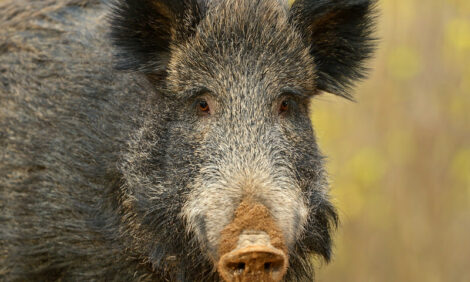



CME: Another Look at Corn and Soybeans
US - CME's Daily Livestock Report for 10th June, 2008.In case you cannot tell, Steve Meyer writes today: My apologies
for another grain themed DLR. If we keep this up, economist ethics
(I hope that is not an oxymoron) will force us to rename this newsletter. But
three factors force me to write once again about grains. First, they are the
dominant news of the day and, in my opinion, the most important factor that
will affect livestock markets over the next few years. Second, the conditions
for the potential feed cost train wreck that I have been writing about
for the past couple of years are all coming to pass. Third — and absolutely
related to the other two — I spent several hours this afternoon helping fill
sandbags to protect homes and businesses in my home town of Adel, Iowa
from the rising waters of the Middle Raccoon River. My family, home and
business are all out of harm’s way but the river will crest sometime tomorrow
at or above the level of the Flood of 1993. Saylorville Reservoir north
of Des Moines will breach a remodeled spillway tonight that is 6 feet higher
than it was in 1993. And the National Weather Service is forecasting 2-4
inches of rain tomorrow night for much of Iowa.
I tell you this not to be any kind of hero or to entice your sympathy
but to point out that the situation with excess moisture is very, very serious.
Planted acres in 1993 fell 2.1 million short of the planned level. Only
85.9% of planted acres were harvested — the lowest level since 1983 (a
severe drought year) and one of only two times (the other was 2002) since
1990 when less than 90% of planted acres were harvested. Finally, the
average national corn yield in 1993 was 100.7 bushels per acre. Compare
that to 1992’s 131.5 and 1994’s 138.6. That 1993 yield was 17.5% BELOW
the 1980-2007 trend. In short — it was a large train wreck.
| E-Livestock Volume | 6/10/08 | 6/9/08 | 6/3/08 |
|---|---|---|---|
| LE (E-Live Cattle): | 8,129 | 7,843 | 11,444 |
| GF (E-Feeder Cattle): | 431 | 413 | 236 |
| HE (E-Lean Hogs): | 23,963** | 20,731 | 12,663 |
| **Denotes a new record for Globex volume | |||

The major difference between 1993 and what we see this year is
timing. The 1993 flood occurred in mid-July to early August after a long
period of constant and heavy rains in the upper Mississippi River valley.
The earlier pattern this year provides some hope of a respite but conditions
had better change quickly.
Steiner Consulting Group included the graph in their
bi-weekly Meat and Deli Planner last week and I thought it deserving
of some attention. It is no accident that corn (black line, right-hand scale)
and crude oil (red line, left scale) have risen almost lockstep over the past
few years. Ethanol has provided a direct demand-side connection that did
not exist to any great degree before the withdrawal of MTBE as a gasoline
additive in 2005. It is almost certain that the connection will continue.
USDA released its monthly Crop Production report today and
it contained a projected national average corn yield of 148.9 bushels
— 5 bushels lower than last month’s trendline yield. The tables on
page 2 show USDA’s supply and use estimates for both corn and soybeans.
The lower yield forecast, combined with lower feed/residual use
and exports, pushed projected corn carryout to only 673 mil. bu. or 5.3% of
total projected usage. Interestingly, the latest yield estimate is very close
to that of ISU’s Dr. Elwyn Taylor that we cited yesterday.
Further Reading
|
|
- You can view the full report by clicking here. |








